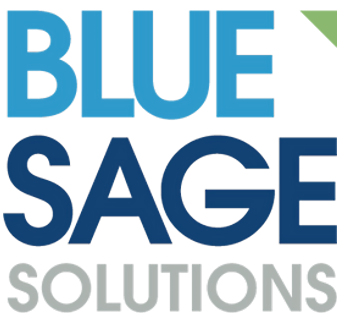Articles

2nd Lien Firms Eye Piggybacks for VA, FHA Assumptions
October 23, 2023
Home Equity Lending News
By Nunyo Demasio
PHILADELPHIA — At last week’s MBA Annual Conference, several second mortgage players talked about growing interest in assumptions on government first mortgages that require the homebuyer to take out a junior lien.
Before heading to the event, Jerry Schiano, CEO of Spring EQ, received a telephone call from someone seeking input while excitedly trying to navigate the unfamiliar terrain of second mortgage financing for loan assumptions.
Mortgages guaranteed by the Department of Veteran Affairs or insured by the Federal Housing Administration can be assumed by a home purchaser, and the buyer often needs a second mortgage. It’s an enticing option for homebuyers during a challenging real estate market — taking over a seller’s relatively cheap mortgage — that comes with intricate structuring and requirements befitting its long-winded terminology. However, the unconventional product has drawn enough interest — and intrigue — to emerge as a trend in second mortgage lending and beyond.
“There are some creative people trying to figure that out now,” said Schiano, who attended the three-day convention, which ended Wednesday, in his hometown. “I just got a call from a guy who’s basically trying to work on that assumption, and then provide a home equity second to provide the difference between where that mortgage is and the purchase. There hasn’t been a lot of that done yet. But necessity, what’s the old saying, is the mother of invention. Assuming a 3% first is like gold dust when you have an 8% or 7.5% market.”
Several lenders apparently want in on the gold dust, attempting to master the intricacies of the unconventional product while partnering with the right folks: The VA or FHA must approve the buyer for financing through a persnickety application process that includes a credit profile. For the VA mortgage, the applicant isn’t required to be affiliated with the military. The catch in the alluring deal? The loan amount on the assumed mortgage typically won’t cover the purchase price that have continued to escalate. The transaction requires the difference between the purchase price (let’s say $250,000) and the mortgage balance ($200,000). With $50,000 needed to close the deal — also known as the assumption gap — most buyers must simultaneously obtain a second mortgage. Such a scenario opens a lane for home equity lenders — if they can navigate the maze.
“I love it,” Jackie Frommer, head of lending at Figure Technologies, said of the product. “There’s a lot of people circling around this — trying to figure out how to do it and what their role in it is.”
Multiple people have approached Frommer to pick her brain on the second mortgage aspect of the equation. One attendee from a startup insisted on delving into the nuances for so long that it slightly delayed Frommer’s scheduled interview with HELN. As a home-equity lender, Figure’s value in assumable loans is obvious. But Frommer expressed curiosity about her conversation partner’s prospective role before being sworn to secrecy.
“They think they can provide a unique benefit,” Frommer said, “that they told me I can’t tell anybody about.” She smiled: “Everybody knows that it would be great to figure out how to get in.”
Most conventional mortgages, including those backed by Fannie Mae and Freddie Mac, are not assumable — though some conventional adjustable-rate mortgages can be assumed. However, homeowners with FHA-insured loans or VA-guaranteed mortgages can offer their first mortgages to qualified buyers without an appraisal, as can some USDA ARM borrowers under specific conditions.

David Aach, COO Blue Sage
“It would be great if there were more,” David Aach, COO of Blue Sage, said. “Obviously in this environment, if you could assume someone’s 2.5% mortgage, you would do that in a heartbeat.”
The, well, assumption is that FHA and VA loans total a small amount. Although such loans are in the minority, the overall number is substantial enough to generate excitement and exploration: assumable loans comprise 24% of the mortgage market, according to Black Knight, the data provider, although other sources peg the figure at roughly 20%.
“Higher than you would think, right?” said Frommer. “I am super excited. It’s a great thing for affordability in general.”
Also called a piggyback loan, a purchase-money second mortgage can be used by a homebuyer with less than 20% down to avoid the costly private mortgage insurance — though LPIs on GSE loans can offset some of the benefit. The purchase-money second only allows up to a 90 percent combined loan-to-value ratio. Nonetheless, the down payment remains an obstacle for most in the target group: low- to moderate-income families.
In a market with elevated interest rates and home prices amid limited inventory, assuming a VA or FHA loan proves compelling to new borrowers. The buyer takes over the low, fixed-rate mortgage, in sharp contrast to the substantially higher payments of a new mortgage.
“We hadn’t really been in an environment where there was a high demand for it,” Aach said. “There’s probably a shortage of education on what’s involved both on the lender’s side and on the borrower’s side. Most people don’t know how to do it. Something you do rarely, you’re not so good at.”
Folks in the industry, though, appear to be increasingly eager to learn. Sellers can stand apart from the competition by offering a more affordable loan. However, servicers are pivotal in the process because of their role in managing the assumption. While servicers are legally obligated to handle the product, their financial incentive is small: a maximum of $900 not factoring in significant costs that undermine their profit. Complicating matters, servicers do most of the logistical legwork: processing, underwriting, and closing the transaction. “The problem is that it’s not that interesting for them right now,” Frommer said, “because they make a teeny amount off of it.”
Nonetheless, the product can be a boon for qualified homebuyers and an alternate revenue source for lenders. In 2023, Carrington Mortgage Series, a full-service mortgage lender, announced plans to provide second mortgages for assumable first mortgages. The convention buzzed with attendees who expect Carrington to face competition in the future on the unique transaction.
“I don’t know anybody doing a lot of that,” Schiano said. “But people are trying to figure that out.”

